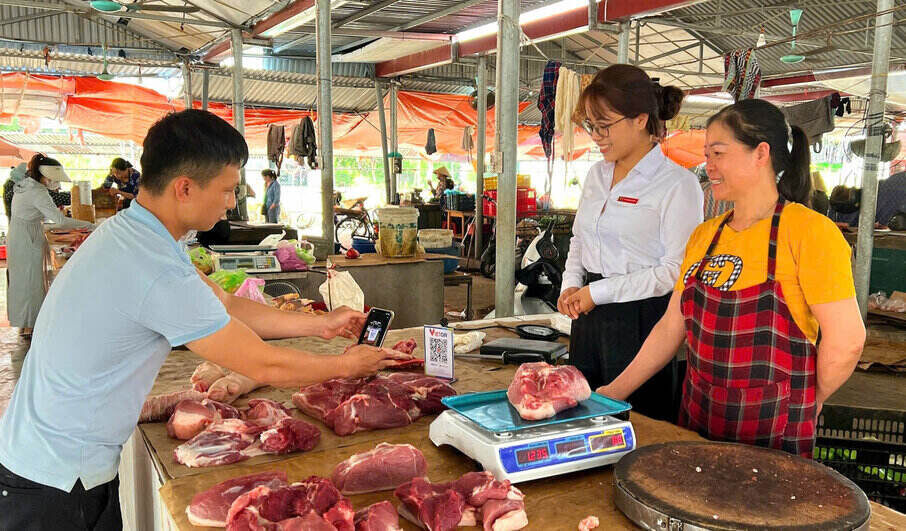In the context of rapidly changing consumer habits, competition from supermarkets and e-commerce is increasing, many traditional markets in Hai Phong City are facing a prolonged lack of customers. However, instead of waiting for buyers, many traders have proactively sought ways to adapt, innovate business forms and access technology to maintain livelihoods.
From the stall to... the phone
At Thanh Ha commune market, Ms. Nguyen Thi Huong - a vegetable trader started trying livestreaming since May. Every morning, she still goes to the unit market to get goods as usual, but instead of just displaying them at the stall, she filmed a short video, took photos and posted them on her personal Facebook. "Customers can watch and order in advance, I have prepared. Whoever is nearby will come and pick them up in the afternoon, whoever is busy will be taken by motorbike taxi. Before, I sold for a hundred and a half a day, now it's all over two hundred," said Ms. Huong.
In Tue Tinh commune, Mr. Tran Van Quan - a rice and dried goods trader has also begun to apply sales software to track orders and print invoices. "A customer asked me to get an electronic invoice, at first I didn't know how to do it. After being instructed by her grandchild, she now knows how to use her phone to create invoices and send them via Zalo. Customers can rest assured, I can easily manage it" - Mr. Quan said.
Not only applying technology in sales, many traders have also expanded payment methods. At Ninh Giang commune market, customers transferring money via QR code is no longer a strange thing. "There are also dozens of payments via phone every day. I install a banking app, the customer scans the code and that's it. The first few months were confusing, but now I'm used to it" - Ms. Vu Thi Tinh, a meat seller, said.

Changing yourself so as not to fall behind
Change is not easy. For many older traders, using smartphones, sales software or social networks is completely unfamiliar. However, market pressure forced them to consider seriously. "Before, I thought selling at the market was enough to survive. But now everyone is busy, and there are fewer customers. I don't change and just sit and look at the unsold goods" - Ms. Tran Thi Hoa, a dried goods seller in Tue Tinh commune confided.
The bright spot is that more and more young people in small-scale merchant families are participating in supporting. His children and grandchildren help install applications, instruct how to record videos, receive orders, and deliver goods. Thanks to that, the conversion of small business households is no longer a personal matter, but gradually becomes a common effort of the whole family and the entire small business community.
Although the change is not yet synchronous, it is clearly shaping a new look for traditional markets. No longer just a place to sell as usual, many traders have now started to become small business operators in a modern direction: from promotion, closing orders, payment to customer care after sales. Some people also proactively learn how to take product photos, respond to messages quickly, and follow customer feedback to adjust the source of goods.
Traditional markets, which are considered "outdated" in the midst of the modern commercial cycle, are now showing new vitality. Traders are quietly transforming, adapting and learning every day not only to keep their livelihoods, but also to contribute to preserving the characteristics of local shopping culture in a new form - more friendly, dynamic and flexible with the times.









